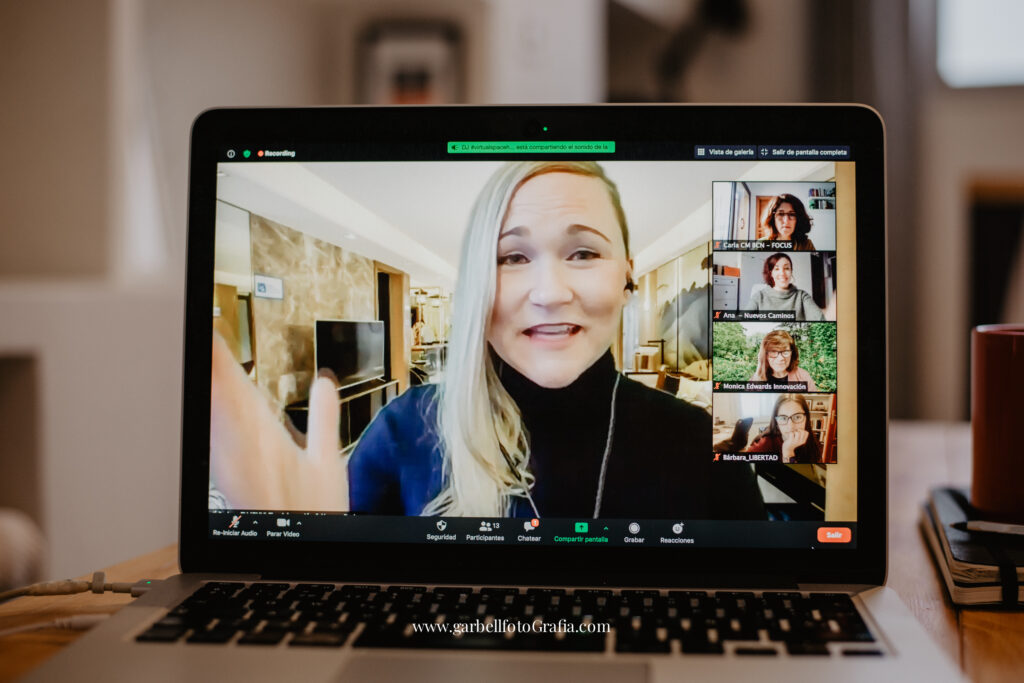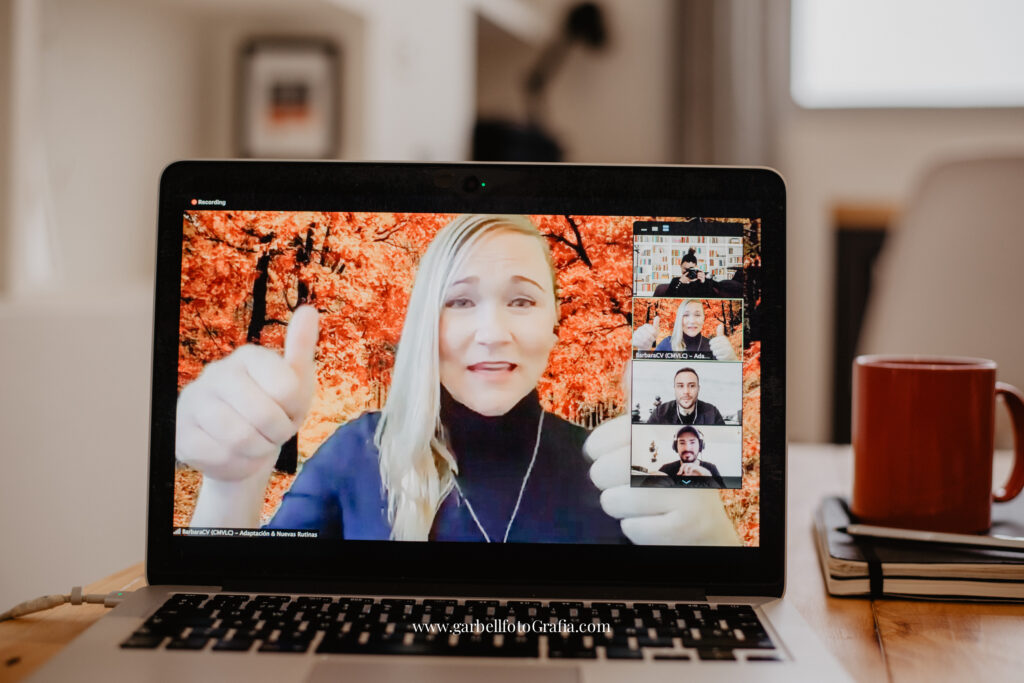Collaborative Online International Learning (COIL), also referred to as virtual exchange, includes opportunities for intercultural and transnational learning to students within the curriculum of a university. Through co-developed and/or co-taught modules, virtual exchange supports the development of 21st-century workforce skills. Very often COIL projects involve the co-development of a course module by lecturers from different universities and/or countries.
This blog article summarises the main points from a #linkedinlive with Eva Haug (Educational Advisor for Internationalisation of the Curriculum and COIL/Virtual Exchange | Amsterdam University of Applied Sciences) and Barbara Covarrubias Venegas (Founder #virtualspacehero).

Eva Haug is an internationally recognised expert on virtual exchange and COIL in higher education.
Educational Advisor for Internationalisation of the Curriculum and COIL/virtual exchange at the Amsterdam UAS, steering group member (elected) of the EAIE Expert Community Internationalisation at Home, and lecturer/trainer Intercultural Competence.
Eva wears many hats but they have a common theme: connecting and learning across differences!
At the Amsterdam University of Applied Sciences Eva advises programmes on inclusive internationalisation.
Connect with Eva on LinkedIn here
What is COIL and why is it so important?
Many might be familiar with the umbrella term “virtual exchange” in the educational context, which has been around for over a decade, but today we will talk about one of its less known forms.
What exactly is COIL?
As stated above the acronym stands for Collaborative Online International Learning and was coined by the State University of New York. Usually, it is quite informal cooperation (that can later turn into a formal partnership), taking place online, between two or more universities from different countries across the globe. Often it takes the form of co-developed and/or co-taught modules of educators from all involved universities.
“The COIL concept triggered my interest, especially because it is so inclusive. Part-time students, students with families, or students that simply do not have the financial means to go abroad, should also get the possibility of gaining international experience. COILing in Higher Education Institutions makes this possible.” (Barbara Covarrubias Venegas)
An excellent practical example of a COIL project is the Global Case Study Challenge with over 600 students from 22 universities. Have a look if you need some ideas about a possible structure or some engaging activities.
This model of virtual exchange can provide access to important intercultural experiences and other learnings for students and educators alike.
For universities, it is an amazing opportunity to internationalize their curricula effectively and inclusively while minimizing financial and bureaucratic efforts. The online aspect allows for truly global collaborations, and the informal element reduces restrictions that might occur when looking for a conventional partner university for an exchange program. These usual constraints include the compatibility of the curricula and/or the research specializations of the universities. As COIL projects do not require the physical presence of foreign students and are often interdisciplinary, they make collaborations with universities possible, which normally would not be considered for a formal partnership.
For educators, it is the perfect chance to expand their intercultural and digital skills. Since this type of project is typically designed and/or taught together by different professors from various universities, it facilitates the exchange of knowledge and values. If approached correctly, it can stimulate new views on topics such as the grading of students or feedback processes in general or in different countries. In terms of promoting intercultural skills and broadening one’s horizon, this approach is more effective than just streaming the lecture online, as it is done in some virtual exchanges.
For students who would not be able to (or do not want to) participate in a “normal” exchange program, working in an international context is still extremely valuable. In today’s working environment, the skills to successfully work in international or global teams, also virtually, are required in most positions and all sectors. COIL projects provide students with the possibility to increase their intercultural and digital skills. Therefore, it can be considered a very inclusive alternative for those who cannot afford a semester abroad, work a part-time job or have a family.
“COIL projects focus on the collaboration of students and educators across borders and in the virtual space. Often, universities only try to reach their internationalization goals by having lecturers stream their courses to universities abroad. This approach takes away a lot of opportunities from learners and educators alike.” (Barbara Covarrubias Venegas)

“For students to be able to find an interesting job in today’s globalized world, it is vital that they enter the job market with the knowledge of how to navigate this environment and themselves in it.” (Eva Haug)
What are the success factors for COIL projects?
Some organizational and didactical factors need to be considered to create an impactful intercultural learning experience.
✅ Clear learning objectives: The learning activities need to be organized in a structured way, to clearly show and benefit from the COIL elements within the curriculum. That includes defining clear learning objectives in advance and conveying them consistently to the learners. Providing a connection between the different parts of the project and how they contribute to reaching the desired outcome, as well as their future benefits, will definitely increase the motivation of the participants.
✅ Focus on the experience/process: When planning cooperation like that, the focus should not only lay on the targeted area(s) of study. The numerous transversal skills and cultural learnings that can be acquired while working in an international team might be completely overlooked if academic learning is prioritized exclusively. An additional effort from everyone is needed to make such an undertaking possible. Therefore, having fun in the process and considering the experience as a whole becomes even more substantial.
“In light of the pedagogy of setting up these projects, it is critical to think about it in a student-centred way and about what exactly you want THEM to get out of it. The focus should not only be on the academic knowledge you want them to gain but also on all the transversal skills and the attitudes that could be developed.” (Eva Haug)
✅ Commitment: Only if all the involved parties are 100% committed during the project, the best possible outcome can be achieved. Making it an obligatory part of the curriculum is one approach to keep students from dropping out once everything has started. If not only the additional work but also the advantages are apparent, it is easier to generate commitment and motivation. Assessing and grading different activities throughout the learning process can be helpful. In this case, cultural and personal differences in grading and the providing of feedback, need to be considered. The responsible educators should, if possible, decide on a rubric/grading criteria beforehand and communicate it clearly to prevent feelings of unfairness or similar perceptions.
How can we support our students and prepare them for working in (global) virtual teams?
One crucial success factor that is often neglected, is the “onboarding” of the involved students and staff. The skills acquired during the “onboarding” are transversal and by no means limited to the university context. But they are indispensable for a successful COIL project. Ideally, the onboarding should take place before the official start of the project and cover the following areas to facilitate an enriching intercultural learning experience:
✅ Technology As all activities and the whole communication takes place online, the right infrastructure and knowledge of how to use it are needed. For the most part, universities have computers and Wi-Fi to which the students have access. This makes participation easier in case the needed infrastructure is not available at home. Not everybody can be expected to have experience with the platforms and other software that will be used. A short introductory lesson or workshop can help to make the start of the project smoother. Besides, no time is wasted explaining the same technical details repeatedly. As some countries are still in lockdown and students might not have access to university infrastructure, consider that maybe not all students own a computer or laptop and might need to join via their smartphones.
✅ Intercultural Teamwork Working effectively in a team, in general, is by no means easy. Adding the intercultural aspect makes it much more complex and demanding. Including the input of an intercultural expert simplifies this part of the preparation. But even if that is not the case, the students should be at least a little familiar with the theoretical basics of intercultural communication and teamwork. If evaluated critically, the internet can provide a lot of useful resources.
✅ Language Sometimes also a language barrier needs to be overcome to attain efficient communication between the students. If that is the case, a longer preparation phase is unavoidable. The acquiring of new language skills, even basic ones, takes time. Do not underestimate the time needed for this process.
Conclusion
Having an open mind and not rushing the preparation process is half the success when planning a COIL project for your students.
It will, without a doubt, require a lot of extra work, but if developed and carried out correctly, everybody will take away something valuable for their life, while also enjoying the intercultural virtual experience!







